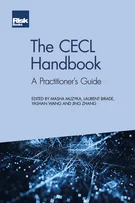The Changing Dynamics of Country Risk
Max Schieler
Preface: Two economists’ views on the bank-sovereign linkage
Introduction
Assessing Country Risk: A Practical Guide
Sovereign Risk: Characteristics, History and a Review of Recent Research
The Arab Spring: Insights for Political Risk Analysis
The Eurozone Crisis: The Forgotten Risks of Private and External Debt
How the Eurozone Crisis Became a Banking Crisis, and the Risk of Japanisation
The Changing Dynamics of Country Risk
Capital Flight as a Political Risk Indicator
Debt Crisis Indicators of Emerging Markets versus Eurozone Economies
How Much Economic Capital Could European Banks Save? The Case for Optimal Sovereign Risk Allocation
Fixing Fundamental Flaws in Probabilistic Country Risk Models
Have We Learned the Country Risk Management Lessons of the 1997 Asian Financial Crisis?
Using Systems Thinking to Enhance Country Risk Assessment
Approaches to the Quantification of Country Risk
Stress Testing Across International Exposures and Activities
A key legacy of the global financial crisis is the realisation that country risk is still very much alive, and has in fact re-emerged as a major concern for all participants in cross-border business. This chapter will therefore explain the key components of country risk, evaluate country risk trends and examine financial institutions’ response to these trends.
The first section outlines the three main components of country risk: sovereign risk, transfer risk and “other” country risk, followed by a section that reveals how these traditional facets of country risk have evolved and experienced change in their relative importance over time. These trends include growing inter-linkages between sovereign and counterparty risks, the rising importance of “other” country risk and political risk, and the declining relevance of pure transfer risk. The third section explores banks’ response to an increasingly complex country risk landscape. This response includes the evolution towards a broader country risk concept, the replacement of rigid sovereign rating “caps” with more counterparty-specific evaluations of sovereign and country risk, and a move to complement the existing analysis
Copyright Infopro Digital Limited. All rights reserved.
As outlined in our terms and conditions, https://www.infopro-digital.com/terms-and-conditions/subscriptions/ (point 2.4), printing is limited to a single copy.
If you would like to purchase additional rights please email info@risk.net
Copyright Infopro Digital Limited. All rights reserved.
You may share this content using our article tools. As outlined in our terms and conditions, https://www.infopro-digital.com/terms-and-conditions/subscriptions/ (clause 2.4), an Authorised User may only make one copy of the materials for their own personal use. You must also comply with the restrictions in clause 2.5.
If you would like to purchase additional rights please email info@risk.net





